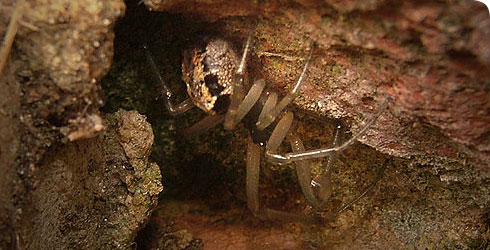Don't panic: it's only a false widow spider
Many media reports talk of a tide of dangerous false widow spiders invading Britain.
Museum Identification and Advisory Service manager Stuart Hine tells the facts and debunks some of the myths surrounding this spider.
In the UK false widow spider is a common name for a group of species in the genus Steatoda. Spiders in this group are found worldwide, with several species being strongly associated with humans in our homes, towns and cities.
Spiders in the group Steatoda are classified as comb-footed spiders of the family Theridiidae. This family also includes the true black widows, though these are classified in a different group, Latrodectus.
Many species of Steatoda are commonly mistaken for black widow spiders as they are similar in shape, have similar webs and tend to be dark, sinister-looking spiders.
The Museum's Identification and Advisory Service has received more than a thousand enquiries about false widow spiders over the last 15 years. Enquiries increase significantly when a media report brings them to the attention of the public.
What are these spiders doing in the UK?
Seven species of false widow spiders are recorded in the UK. Four are native to the UK, two were accidentally introduced with traded goods and the other doesn’t appear to be established here yet but is frequently imported.
-

Species of false widow spider
Learn which species of false widow live in the UK and which you are most likely to spot.
-

Should I be worried?
Identification and Advisory Service manager Stuart Hine answers common questions about false widow spiders.
-

Species mistaken for false widow spiders
Meet some spiders commonly confused with false widows.
Identification forums

Share identification tips on UK plants, insects, animals, rocks and minerals. Museum experts will help to answer your queries and identify your specimens.

UK spider bite reports
Find out about genuine cases of spider bites in the UK, where the specimen was submitted for identification to the Natural History Museum, and accompanied by an account of the bite and its symptoms.
